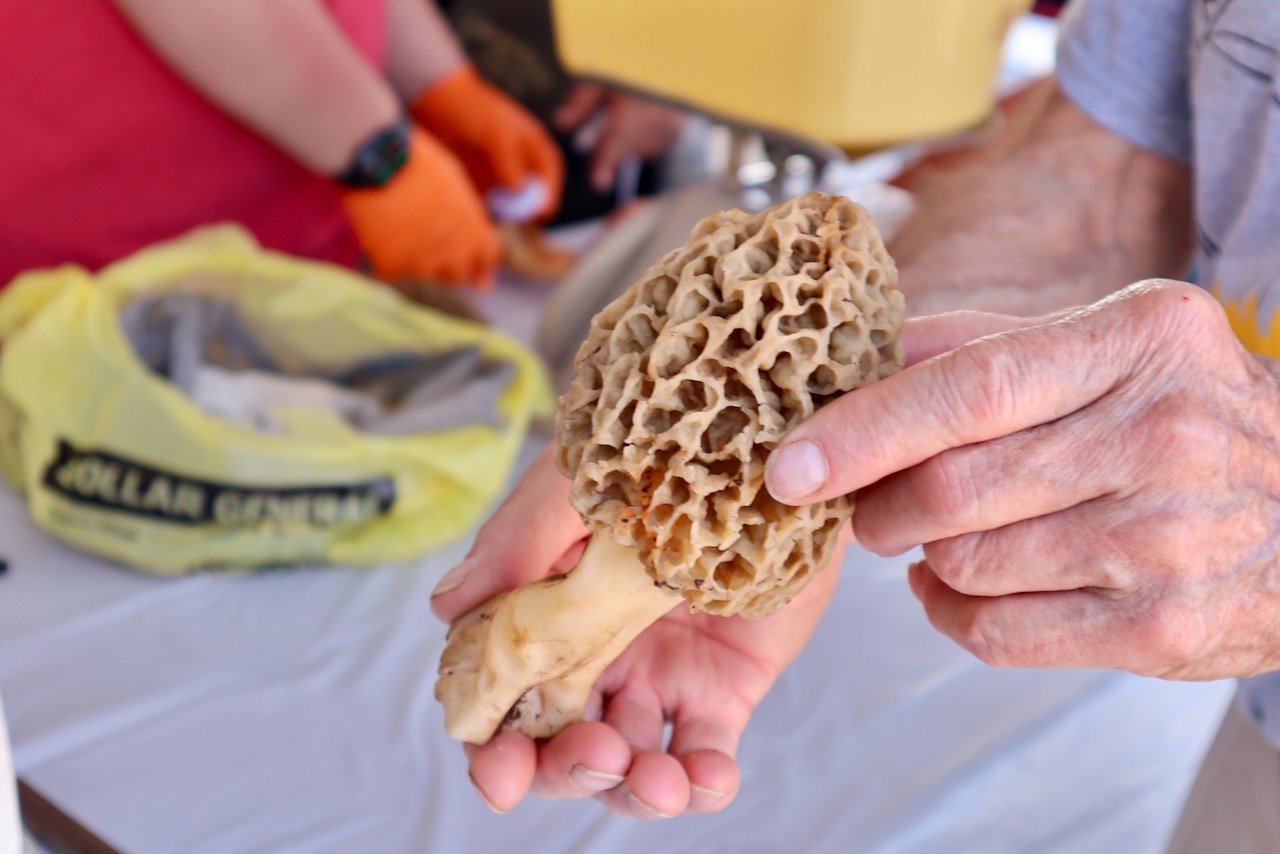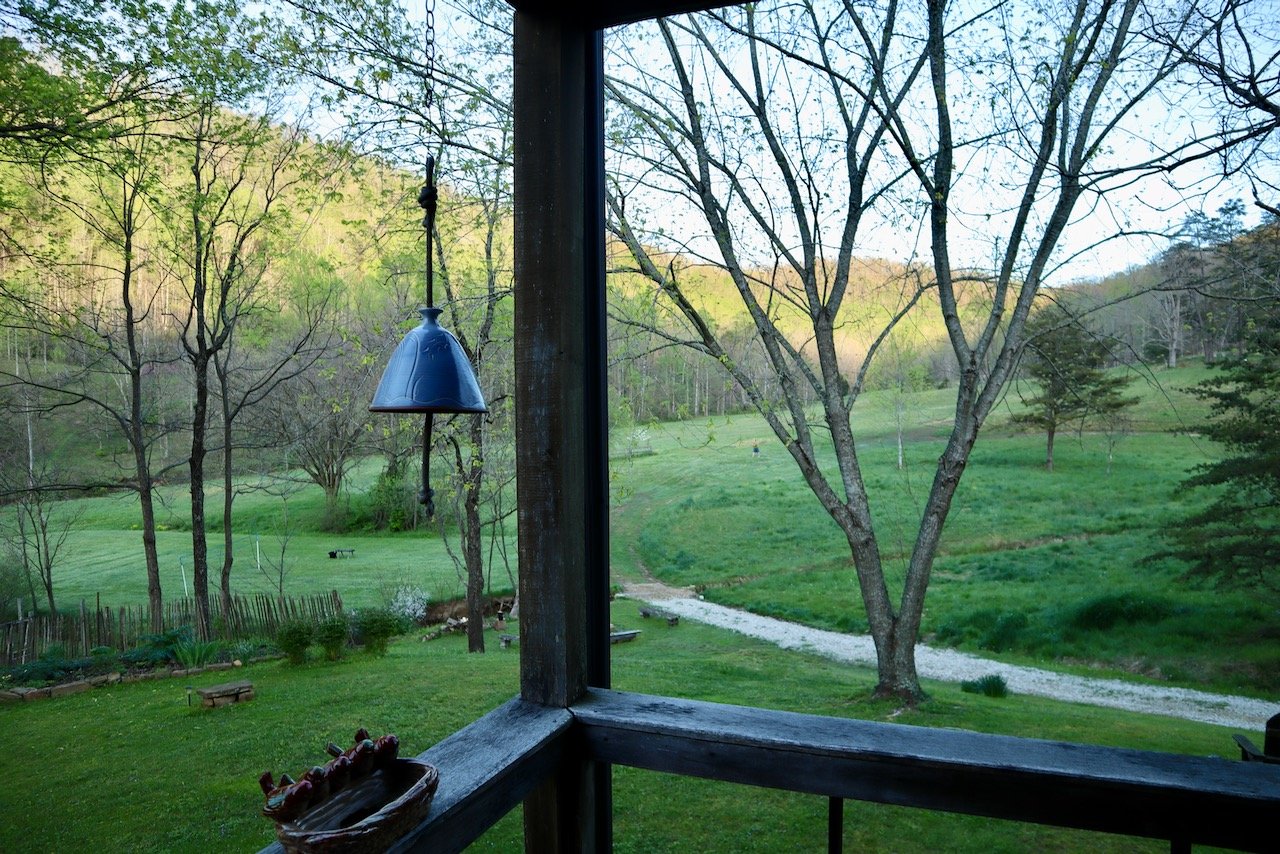Hunting Morels
Alex Babich and Robin Reed took to the stage at the Mountain Mushroom Festival in Irvine, Ky. to share tips and stories about hunting morels.
Habitat range–
Georgia to Michigan; Rockies; Pacific Northwest
Best time of year–
Mid-spring in the eastern US; early summer in the Rockies; nearly year-round on West Coast
Mushroom hunter Alex Babich says the range moves south to north approximately 100 miles per week.
Best time to look–
After the last (or nearly last) frost and before the trees leaf out.
Ideally after a period of rain, followed by a few days of sunshine and with a soil temperature around 50 to 55℉.
In Kentucky, look for when the dogwoods and yellow dandelions are in bloom.
Where to look–
Any wooded area.
Around certain trees: In Kentucky, try live sycamores, wild cherry and apple, ash, pine trees.
Alex Babich’s favorite spots are dead elm trees, especially ones that have died recently.
Alex says to look for the less promising places because they’re the ones others have passed on by.
It’s a short season, make the most of it–
Usually a couple of weeks but this year (2022) in Kentucky was projected to be a few days at most. So file this information away for 2023!
Identifying your morel –
Best to go with someone and/or take a guidebook the first time at least.
A true morel is hollow all the way through.
Size ranges from thumb-sized to hand-sized. We saw morels at the mushroom festival that were 7’ long and 9” around at the widest point, weighing nearly 4 oz.
The stalk is thick, smooth and white and roughly the same length as the cap.
The bottom edge of the cap is completely attached to the stalk.
The cap may be dull gray, brown or yellow; conical in shape and filled with irregular honeycombs.
How to harvest–
Cut the mushroom stem at ground level.
It’s nice to carry a soft little brush for gently brushing excess dirt and little bugs away.
Place in a cloth or mesh bag; this allows the spores to drop and hopefully spread.
Store indirectly on ice in a cooler as soon as possible.
Reasons to hunt morels–
Alex and Robin say they’ve “met so many characters.” And morels are delicious! And free!
If you’re lucky enough to find some–
Do not store in plastic; use paper or cloth.
Refrigerate as quickly as possible. If that’s not possible, store them indirectly on ice in a cooler until you can get to a refrigerator.
When ready to cook–
Split your morels in half and soak in room temperature water for 15-30 minutes to dislodge any hitchhikers.
Dry thoroughly before cooking.
The mountain way is to dredge morels in seasoned flour or cornmeal (or a combination) and fry them.
They can also be sautéed and/or added to sauces. Butter and cream are almost compulsory.
Asparagus is a natural go-with.
If you find more than you can cook, they dehydrate successfully.
Do not eat any morels that have begun to develop damp or slimy spots. Or any mushrooms, for that matter, that have reached this state.
For more morel info from our new friends in Irvine, Kentucky, check out this video!
© 2022, Holly Hill Inn/Ilex Summit, LLC and its affiliates, All Rights Reserved
Related Content
Holler Hospitality
Down in the valley, valley so low – are 300 acres of rolling meadows and hillsides where Barbara Napier has cultivated a world-class but uniquely Kentucky retreat at Snug Hollow Farm.





